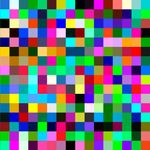 Adobe Community
Adobe Community
- Home
- Color Management
- Discussions
- For accurate display a sensor based display system...
- For accurate display a sensor based display system...
For accurate display a sensor based display system calibr...
Copy link to clipboard
Copied
For accurate display a sensor based display system calibration and profiling kit is essential. X-Rite's i1 display Pro is a decent base level offering.
When using that software you'll have the opportunity to set the screen luminance target value (what we used to call brightness) to a reasonable level, as a guide you should be aiming to get your screen to be as bright as well illuminated paper. I suggest you start with a luminance target of, say, 120 CDm2 and then adjust your calibration target value lighter or darker guided by your eyes.
Next you'll need to activate Photoshop's "soft-proofing" via menu item view / proof setup/ custom and select the CMYK icc output profile relevant to your printing condition. (as you are using CMYK values, it seems -it's vital that you're actually working on your document in the right CMYK colour space too)
In the proof setup/ custom dialog checking "ink black" will reduce black intensity as guided by the press profile. A good display screen can display a much darker black than ink on paper.
Checking the paper white option is correct, strictly, but is often deselected in practice as it may add an unexpected tint [due to strict measurement of 'optical brightener additives' [OBA'S] in the printing substrate].
I hope this helps
if so, please "like" my reply
thanks
neil barstow, colourmanagement.net :: adobe forum volunteer
[please do not use the reply button on a message within the thread, only use the blue reply button at the top of the page, this maintains chronological order]
Copy link to clipboard
Copied
I typed up this as a reply to the original post in the Photoshop forum, but as I clicked "post" the thread had already not only been moved, but also split into two separate threads. This is a pretty confusing situation. The context is lost now. I'm posting my reply here nonetheless:
The i1 Display Pro is hardly a "decent base level offering". Let's be realistic here.
Yes, for lab conditions there are more precise reference instruments with even tighter tolerances. For real-world use in real situations the i1D3 well exceeds any practical requirements. It has dichroic glass filters that don't fade, and it has a lens system to eliminate flare and stray sidelight. It has been shown to have exceptional inter-unit consistency.
In this case the problem is most likely the brightness level and the quality of the monitor. Shadow and highlight separation is one of the things that separate the good, the bad and the ugly (along with panel uniformity). Set to the right luminance level, you should be able to distinguish the individual steps right up to 255.
Assuming US Web Coated (SWOP) this is what the numbers look like. Obviously, something's very wrong in the setup if these can't be separated on screen:
Copy link to clipboard
Copied
Dag
something has gone mad with moving posts today. I am posting about this in back room
I agree i1 display pro is a decent instrument, I am not a fan of the software though.
neil barstow

